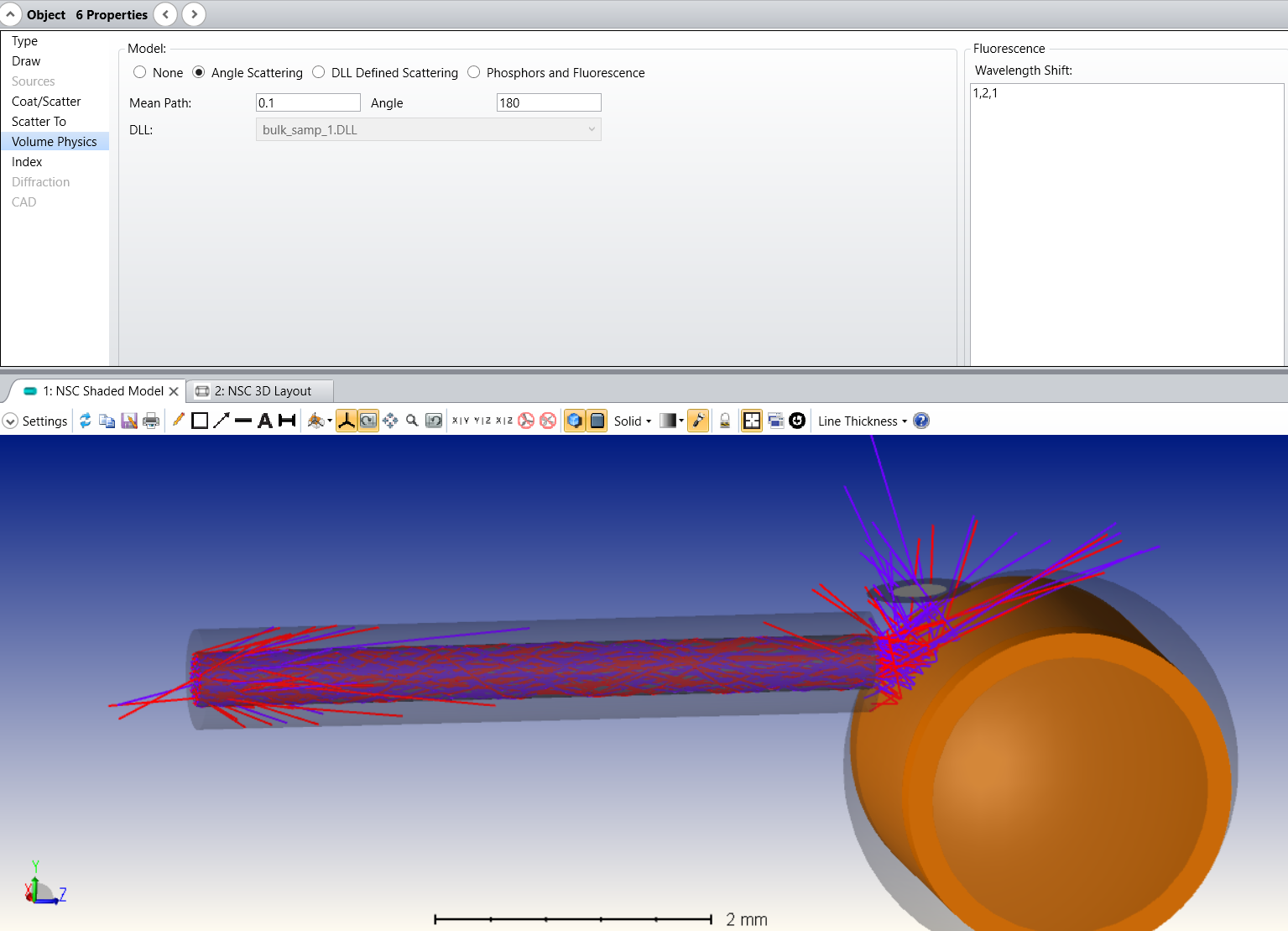Hello,
I have a source that emits ultraviolet light. The light passes through an optical fibre and then hits a material that emits infrared light in a Lambertian manner.
How can I ensure that only the rays emitted by the excited surface of my cylinder are all infrared? As you can see in the image below, my source emits infrared light, which is not the case. The small disc above is a detector with which I want to see only the infrared rays of my cylinder.
I tried do this according to this tutorial but I don't understand what I am doing wrong.



